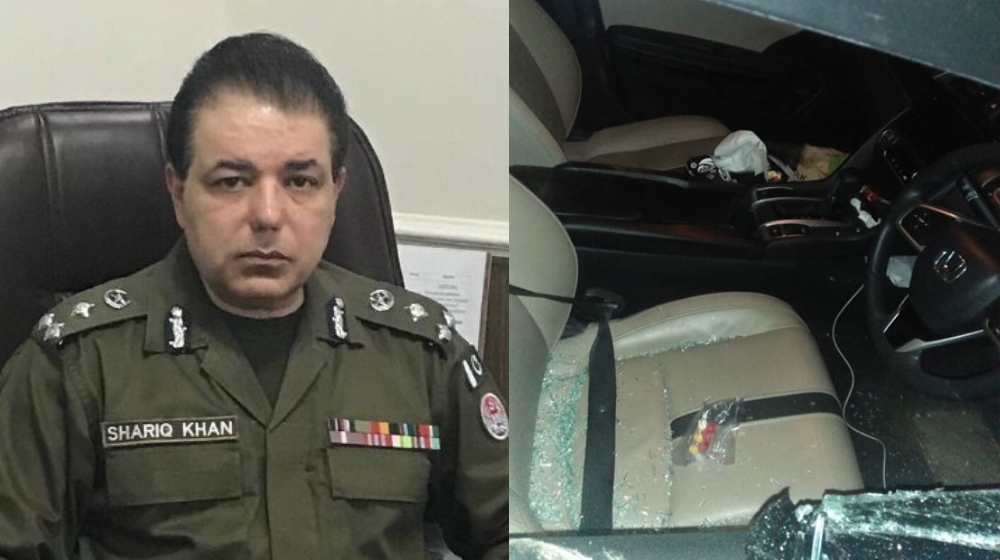Just days ago, the Anti-Terrorism Court sentenced Abid Malhi and Shafqat Ali to death in the Lahore Motorway rape case. Once again we were reminded of the heinous crime that shook the nation.
As the public lauds the fact that justice has been served, it is important to appreciate the conscientious and painstaking endeavours of the police force behind it. Deputy Inspector General (DIG) Lahore, Shariq Khan sat down with LENS for an exclusive insight into the man-hours and hard work that went into the investigation.
He explained that aside from the core team of SPs and their subordinates, policemen from all across Punjab were hard at work for the identification and arrest of the accused.
ALSO READ
Here’s How the Motorway Rapist Abid Malhi Was Finally Caught
Police from all districts of Punjab, the Counter-Terrorism Department (CTD), and other institutions played their part.
“Obviously, teamwork greatly helps, … all that experience is concentrated allowing the job to be done faster and with better quality,”
He shared how aside from extending manpower other institutes and police forces cooperated to every extent.
“There were no financial or technological issues, because the entire Punjab police and other [law enforcement] agencies were onboard,”
Investigating the Lahore Motorway Rape Case
As for the investigation itself, the DIG shared how evidence fall into some basic types;
- Direct evidence
- Forensic evidence
- Analogical Evidence
- Anecdotal Evidence
- Character Evidence
- Circumstantial Evidence
- Demonstrative Evidence
- Digital Evidence
- Direct Evidence
- Documentary Evidence
DNA samples fall under forensic evidence. It connects suspects to the crime scene and eventually proves their crime. In the Lahore Motorway rape case, not only did DNA from the medico-legal exam but also blood samples from the broken-in-car window connected Abid and Shafqat to the crime.
Meanwhile, victim statement/testimony is direct evidence. Occular testimony [eye-witness accounts) also falls into this category
“The victim’s statement was very important. She (the victim) bravely shared what she saw, what she experienced,”
The main culprit Abid Malhi had earlier managed to escape from the clutches of law enforcers on three separate counts. Many were outraged and deemed these as ‘ill-planned attempts’ on the police’s side. However, DIG Lahore shared the dynamic of police trying to catch culprits and these culprits evading the law.
ALSO READ
We Can’t Catch Motorway Rapist with Outdated 2G Technology: Police Officials
Police need to do their due diligence before following a lead. Not all clues, leads are necessarily correct. Police kept working on promising leads and eventually they caught the culprit.
“They run and we chase, … what you don’t know is that whenever there is a lead, you first refine information and then take action, … we didn’t have his (Abid Malhi’s) exact location when we carried out a raid, … I don’t think it was ill-planning on the police’s part.”
Curbing Crime
Abid Malhi and his accomplice Shafqat Ali turned out to be habitual criminals. These men were hiding in the forest after the robbery on the night of the incident. Research already shows convicts behind small crimes can be roped up in more serious offences later on.
So shouldn’t the police be working on crime prevention with such information? Shariq Khan explained;
“Where there are people there will be crime. 100% crime prevention is impossible. What we can do is if police work hard with sincerity, 100% crime cases can be solved.”
Adding that the best prevention is obviously the detention of criminals.
ALSO READ
Unbelievable But True: Punjab Police’s Twitter Account is Doing Social Media Right
He even shared how there is a watch-list for criminals with the potential to engage in more serious crimes. However, developing a database takes time. 10 years ago this progress had not even been made.
“There is a branch/bureau of the investigation wing that keep a formal record of convicts, and periodically updates these records,”
DIG Shariq Khan said this record helps investigations and it did help in this case.
Even motorway police have been more vigilant following the Lahore Motorway rape case. Meanwhile, police patrolling in the rural areas on the outskirts of Lahore has been increased.
What They Need To Do Better
This all sounds like great work, but how many people still feel police needs to do better? DIG Lahore certainly thinks so.
“No institute in the world is perfect and improvement is a constant evolutionary process. However the verdict, in this case, has proved that this (Pakistan) is a vibrant state that operates in line with the Constitution and law,”
He added that everyone will try their ‘ultimate best’ to ensure such an incident does not happen again. As for crime in general DIG Shariq Khan asserts they will try to bring this before the Court, in line with the law. They want these criminals to be punished according to the law.
As for the public’s lack of faith in law enforcement after this case, police have done a lot to try and restore that.
“The sense of insecurity the public felt, I feel that should subside now to an extent,”
Police Are Humans Too
Much like the rest of us, the gravity of the situation also affected policemen. Speaking on the mental and emotional well-being of law enforcement personnel, DIG Lahore discussed how counselling for policemen is institutionalized worldwide, except in Pakistan.
“Policemen that worked on the case or didn’t, felt [the pain] equally. This was a heart-shattering incident, and I was also affected [emotionally], … Yet policemen went beyond the call of duty to deal with this case, putting forth their human side,”
DIG Lahore said authorities are discussing the institutionalization of counselling for policemen in Pakistan. Also, efforts are being made to address the emotional and mental well-being of law enforcement personnel.








